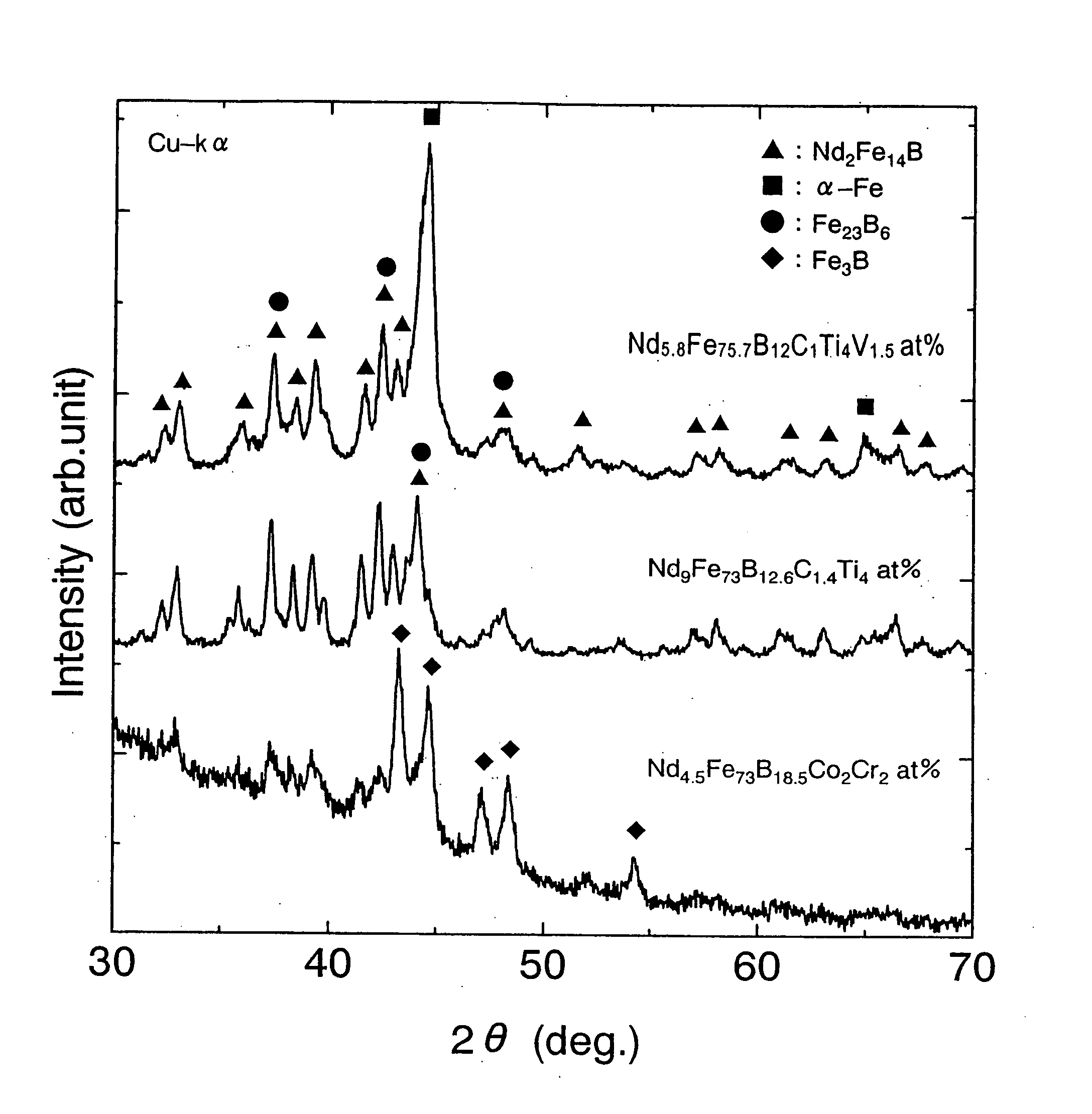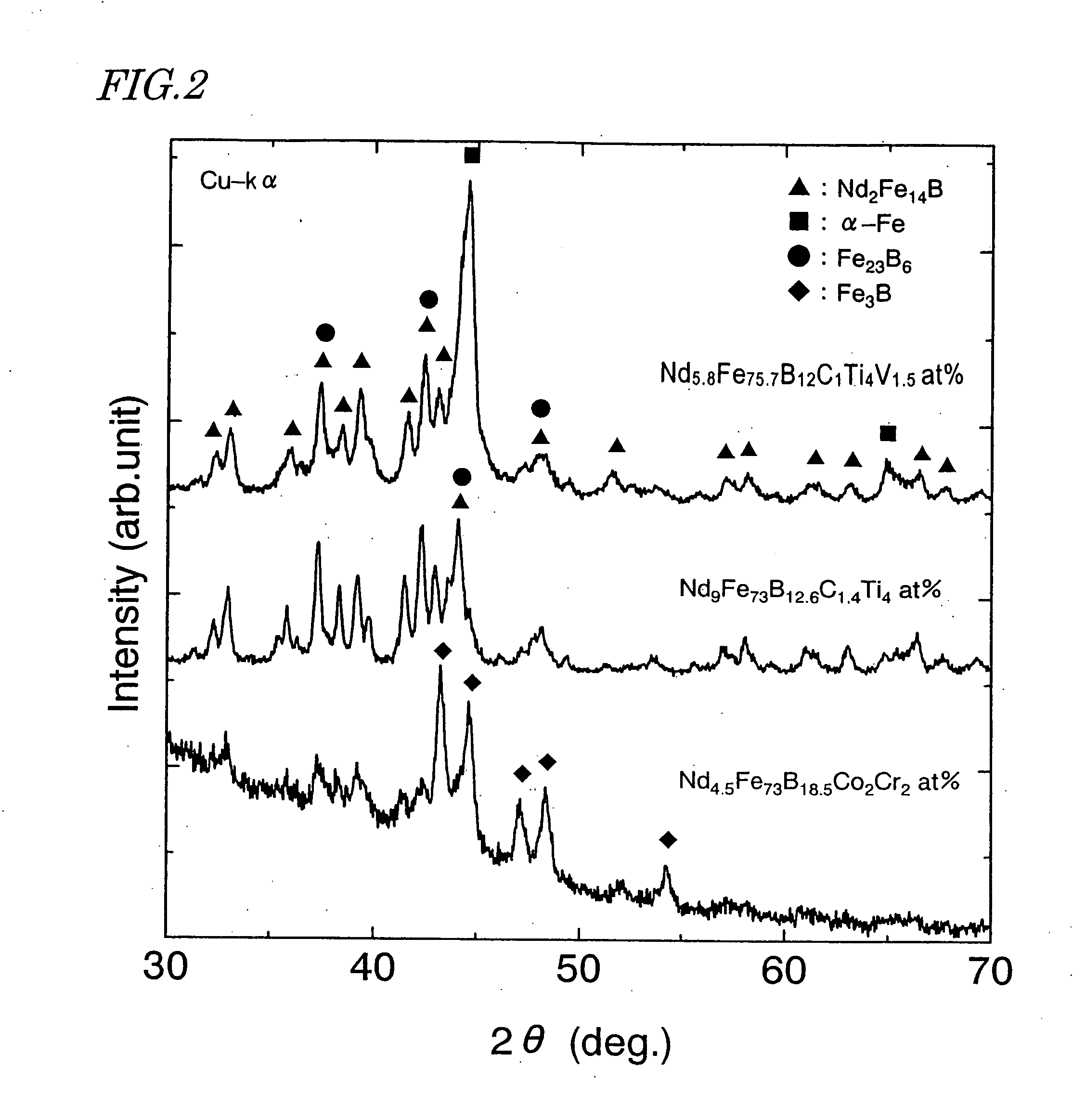Nanocomposite magnet and method for producing the same
a nano-composite magnet and nano-composite technology, applied in the field of nano-composite magnets, can solve the problems of hard ferrite magnets not being able to achieve the high remanence bsub>, the cost of sm-co-based magnets is high, and the cost of producing nd-fe-b-based magnets is still high, so as to increase the magnetization of nano-composite magnets, improve the performance of nano-
- Summary
- Abstract
- Description
- Claims
- Application Information
AI Technical Summary
Benefits of technology
Problems solved by technology
Method used
Image
Examples
example 1
For each of the samples Nos. 1 to 8 shown in the following Table 1, the respective materials B, C, Fe, Co, Ti, V and Nd with purities of about 99.5% or more were weighed so that the sample had a total weight of about 600 g and then the mixture was put into a crucible of alumina. Thereafter, these alloyed materials were melted by an induction heating method within an argon (Ar) atmosphere at a pressure of about 70 kPa, thereby preparing a melt of the alloy. After the temperature of the melt had reached about 1,500° C., the melt was cast into a water-cooled copper mold to make a flat-plate alloy. Thereafter, the alloy was weighed so as to have a total weight of about 15 g and then put into a crucible of quartz having an orifice with a diameter of about 0.8 mm at the bottom. Then, the alloy was melted by an induction heating method within an argon (Ar) atmosphere at a pressure of about 1.33 kPa to about 47.92 kPa, thereby preparing a melt of the alloy. After the temperature of the mel...
PUM
| Property | Measurement | Unit |
|---|---|---|
| Fraction | aaaaa | aaaaa |
| Nanoscale particle size | aaaaa | aaaaa |
| Nanoscale particle size | aaaaa | aaaaa |
Abstract
Description
Claims
Application Information
 Login to View More
Login to View More - R&D
- Intellectual Property
- Life Sciences
- Materials
- Tech Scout
- Unparalleled Data Quality
- Higher Quality Content
- 60% Fewer Hallucinations
Browse by: Latest US Patents, China's latest patents, Technical Efficacy Thesaurus, Application Domain, Technology Topic, Popular Technical Reports.
© 2025 PatSnap. All rights reserved.Legal|Privacy policy|Modern Slavery Act Transparency Statement|Sitemap|About US| Contact US: help@patsnap.com



